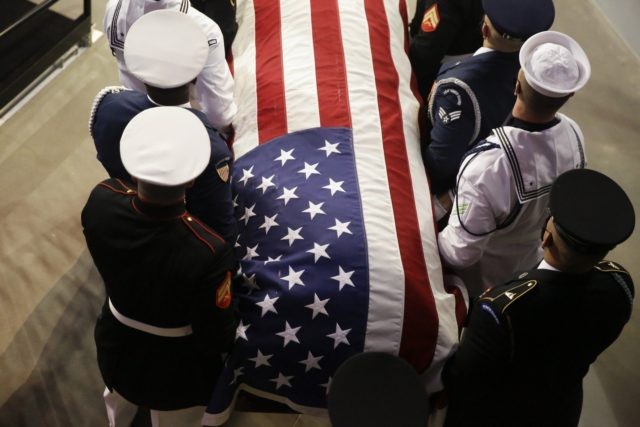SELMA, Ala. (AP) — )The late U.S. Rep. John Lewis crossed the Edmund Pettus Bridge in Selma, Alabama, for the final time Sunday as remembrances continue for the civil rights icon.
A crowd began gathering near the bridge that became a landmark in the fight for racial justice when Lewis and other civil rights marchers were beaten there 55 years ago on “Bloody Sunday,” a key event in the fight for voting rights for African Americans.
A horse-drawn hearse retraced the route through Selma from Brown Chapel African Methodist Episcopal Church, where the 1965 march began. As the wagon approached the bridge, members of the crowd shouted “Thank you, John Lewis!” and “Good trouble,” the phrase Lewis used to describe his tangles with white authorities during the civil rights movement.
Some crowd members sang the gospel song “Woke Up This Morning With My Mind Stayed on Jesus.” Later, some onlookers sang the civil rights anthem “We Shall Overcome” and other gospel tunes.
The hearse paused atop the bridge over the Alabama River as the cicadas sang in the summer heat. On the south side of the bridge, where Lewis was beaten by Alabama state troopers in 1965, family members placed roses that the carriage rolled over, marking the spot where Lewis spilled his blood and suffered a head injury.
As a military honor guard lifted Lewis’ casket from the horse-drawn wagon into an automobile hearse, state troopers, including some African American ones, saluted Lewis.
Lewis’ body will be brought to the Alabama Capitol in the afternoon to lie in repose.
A series of events began Saturday in Lewis’ hometown of Troy, Alabama, to pay tribute the late congressman and his legacy. He will lie in state at the U.S. Capitol next week before his private funeral Thursday at Atlanta’s historic Ebenezer Baptist Church, which the Rev. Martin Luther King Jr. once led.
A native of Pike County, Alabama, Lewis became involved in the civil rights movement as a young man.
In 1965, he and other marchers were beaten in Selma. The news coverage of the event help galvanize support for the passage of the Voting Rights Act of 1965.
Frank and Ellen Hill drove more that four hours from Monroe, Louisiana, to watch the procession.
Frank Hill, 60, said he remembers, as an African American child, watching news footage of Lewis and other civil rights marchers being beaten by law enforcement officers.
“I had to come back and see John Lewis cross the bridge for the last time,” said Hill. It’s funny to see the state troopers here to honor and respect him rather than beat the crap out of him,” Hill said.
Lewis, 80, died July 17 several months after he was diagnosed with advanced pancreatic cancer.

COMMENTS
Please let us know if you're having issues with commenting.